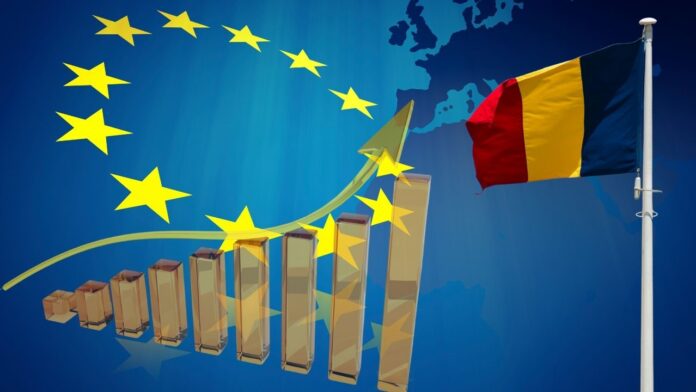Romania is experiencing a fresh wave of entrepreneurial activity, ranking as the third-fastest growing EU country in terms of new business formations during the second quarter of 2025. According to the official figures released by Eurostat on August 18, 2025, Romania registered a 19% increase in new companies compared to the first quarter of the year.
The data highlights a strong revival of entrepreneurial confidence across Europe, with Romania joining the Netherlands (+57.7%) and Spain (+27.6%) as the top three performers. These countries showed growth far above the overall EU average, proving that despite economic challenges such as inflationary pressures and ongoing global uncertainties, many Europeans are still choosing to invest in new businesses.
In contrast, not all member states shared in this momentum. Countries such as Denmark (-18.2%), Cyprus (-8.4%), and Germany (-6.2%) reported significant declines in new business registrations. This split demonstrates the uneven economic climate across the EU, where some markets are thriving while others are facing stronger headwinds.
Sector-by-Sector Growth: Where Are the New Companies Emerging?

The Eurostat report also breaks down which sectors attracted the most new businesses.
- Transport sector (+13.1%) – Romania and other EU states saw a surge in transport and logistics companies. This trend is linked to the rapid growth of e-commerce, increasing demand for delivery networks, and the expansion of cross-border trade routes.
- Information & communications (+8.2%) – Start-ups in IT services, digital platforms, and telecommunications continued to expand. Romania has been positioning itself as a regional hub for IT outsourcing, and this growth reflects both domestic and foreign investment in the tech sector.
- Financial services (+5.2%) – Fintech start-ups and micro-finance institutions grew steadily, showing investor confidence in financial innovation and digital banking.
The only area without growth was industry, where the number of new companies remained unchanged. Analysts suggest that higher energy prices and industrial supply chain pressures are discouraging entrepreneurs from entering traditional manufacturing at the moment.
Insolvencies on the Rise: Romania Among the Hardest Hit

While business registrations grew, the Eurostat data paints a different picture on the insolvency side. Across the EU, the number of companies declaring bankruptcy rose by 1.7% in Q2 2025 compared to the previous quarter.
Romania was one of the countries most affected, recording a 17.7% increase in insolvencies, making it the fourth-highest rise in the EU. Only Latvia (+70.7%), Cyprus (+66.8%), and Slovakia (+20.1%) faced sharper increases.
At the same time, some countries managed to bring insolvencies under control. The largest decreases were observed in:
- Estonia (-28.7%)
- Spain (-8.3%)
- Sweden (-8.1%)
This shows that while some economies are generating more start-ups, they are also experiencing fragility in sustaining businesses—Romania being a clear case where the entrepreneurial spirit is strong but financial pressures are leading to closures as well.
Which Sectors Are Struggling With Insolvencies?
Eurostat also reported mixed outcomes across different industries in terms of insolvency filings:
- Information & communications (+13.6%) – Even as this sector grows in new registrations, it also witnessed a sharp increase in bankruptcies, suggesting intense competition, cash flow problems, or difficulties in scaling start-ups.
- Construction (+8.1%) – Many companies in construction are struggling with higher raw material costs and labor shortages, leading to an uptick in insolvencies.
- Accommodation & food services (-7.5%) – Encouragingly, hospitality businesses reported fewer bankruptcies, thanks to rising tourism and domestic travel demand.
- Trade (-3.7%) – Retail and wholesale trade also saw a decline in insolvencies, showing resilience despite challenges from inflation and changing consumer patterns.
Historical Trends: From Pandemic Disruption to Recovery

The Q2 2025 data fits into a broader trend of fluctuations seen since 2018:
- 2018–2019: Business registrations across the EU grew slowly but steadily.
- 2020 Pandemic Shock: Both Q1 and Q2 of 2020 saw severe drops in new company formations due to lockdowns, uncertainty, and halted investment.
- Late 2020–2021 Recovery: Q3 2020 marked the start of a recovery, as governments introduced stimulus packages and support schemes.
- 2022–2024 Growth: From Q1 2022 onwards, new registrations mostly increased, reaching a record high in Q4 2024—the strongest performance since Q1 2018.
- 2025 Volatility: Registrations dipped in Q1 2025 but bounced back sharply in Q2, with countries like Romania driving the rebound.
For insolvencies, the pattern is reversed:
- 2020: Declined during the pandemic because of government moratoriums and financial support.
- 2021–2024: Insolvencies began rising as support ended, peaking around mid-2024.
- 2025: Insolvencies remain high, hitting the highest level since 2018 in Q2 2025.
What the Data Means for Romania and the EU Economy
The Eurostat findings underline a dual reality:
- On one side, new companies are thriving, with Romania demonstrating strong entrepreneurial momentum and resilience.
- On the other, the rise in bankruptcies signals financial fragility, with many businesses unable to withstand cost pressures, credit challenges, or market competition.
For Romania, the data shows that while new entrepreneurs are entering the market, existing businesses are under serious financial strain. Policymakers may need to balance support for start-ups with measures to prevent insolvencies, such as easier access to financing, tax relief, or targeted sectoral support.
At the EU level, the data suggests that the bloc’s economy is still adjusting to post-pandemic realities, inflationary cycles, and global market disruptions. The divergence between booming countries (like the Netherlands, Spain, and Romania) and struggling ones (like Denmark and Germany) illustrates how uneven the recovery remains.


















![10 Countries With the Best Healthcare in the World [Statistical Analysis] Countries With the Best Healthcare in the World](https://articleify.com/wp-content/uploads/2025/07/Countries-With-the-Best-Healthcare-in-the-World-1-150x150.jpg)










